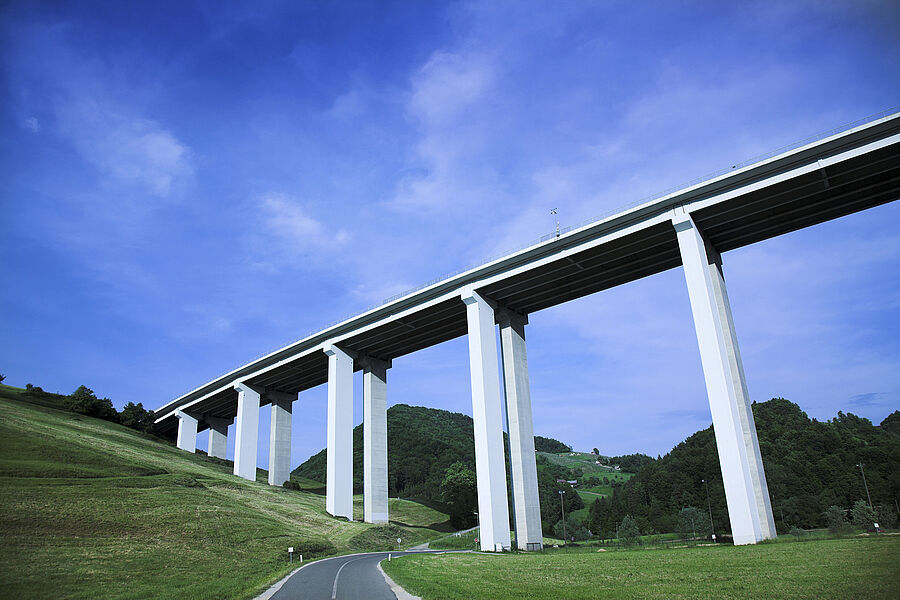Development of a new dynamic high speed load model for railway bridges
The high-speed load models HSLM-A and -B, developed in the 1990s, are provided in the Code “EN 1991-2” for a dynamic analysis of railway bridges within routes exceeding a vehicle speed of 120 km/h. The compliance with the (dynamic) structural capacity and the serviceability acceleration must be verified for designing new bridges as well for assessing existing bridges, especially when the corridor allowed speed increases. New vehicle types, which are not always covered by the standardised load model, must be additionally examined about the permissible loads and acceleration limits prior to the route approval.
Many newly developed operational trains which are already approved for infrastructure operators' route network lead to a clear need for the revision of the existing high-speed load-model. Nowadays different train configurations for the dynamic analyses of bridges are defined on a national level, which makes the evaluation of the transnational compatibility for routes with interoperability requirements more difficult. On the other hand, currently, a model for fast moving freight trains (up to 120 km/h) is missing at all, even though their dynamic effect on railway bridge structures is not neglectable.
The international consortium consisting of the Technical University of Darmstadt (Germany), AIT Austrian Institute of Technology, KU Leuven (Belgium), and REVOTEC (Austria), commissioned by the German Centre for Rail Traffic Research at the German Federal Railway Authority German EBA (“Eisenbahn-Bundesamt”) will develop a new standard-compliant dynamic load model in order to simulate action of railway vehicles on bridges. The approaches are based on the mechanical response (acceleration) during train crossing or on the train signatures covering the currently known standard and operational trains. Measurement of the dynamic characteristics of the vehicles and in deep investigation on damping effects of vehicle/bridge interaction will round up the planned results. The newly developed dynamic load models are finally validated on an existing large data set of real railway bridge structures. Some of them have already been experimentally investigated with respect to the actual dynamic parameters and the vibration responses during train passage.
AIT has a leading part for developing the load model. A large-scale dynamic FEM computation, used for finding an optimised generic load configuration, will be used. Approximately 1500 bridges are defined according to a realistic scattering of the structural parameter of the bridges. They are loaded with a reduced set of relevant vehicle configurations taken out of approximately 3500 different trains The variation of train speeds up to 420 km/h ends to a big data set of >10 million configurations of train passages, which is the basis for developing the new load model and new simplified methods for calculation bridge crossing within the ongoing project, which will end 2022.
The project is financed by the German Federal Railway Authority (EBA).





